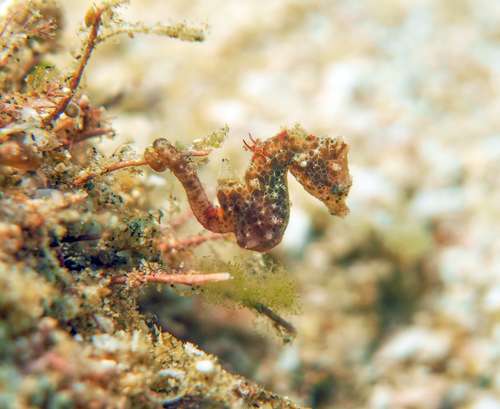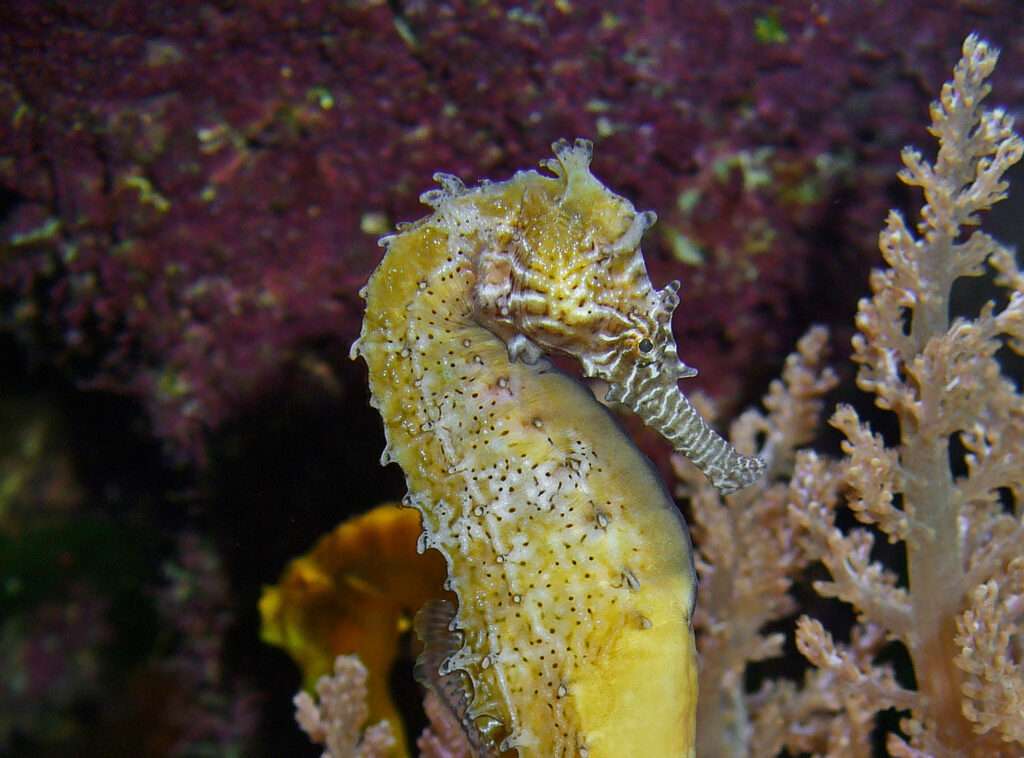
Hippocampus nalu, also called the African pygmy seahorse, or the Honeypot seahorse, is native to South Africa and a member of the Syngnathidae family. The Sodwana Pygmy Seahorse is the first pygmy seahorse species to be found in the waters of the African and Indian Oceans. The new Sodwana Pygmy Seahorse is a tiny creature that reaches a height of just over 2 cm (about the size of a grain of rice), and it has a honey-brown color with a white netted pattern layered over it. Its tail is reddish.
Graham Short, an Australian Museum research associate, first characterized the hippocampus nalu. The Sodwana pygmy seahorse’s scientific name, Hippocampus nalu, translates to “here it is” in the native Xhosa and Zulu languages to emphasize that the species was present before it was discovered. The name also alludes to Savannah Nalu Olivier’s middle name, who found the species and was the first to alert scientists to its existence.

Discovery
This little critter is the first documented pygmy seahorse to live in the waters off Africa. After getting a tip from a local diver, a study team later found this pygmy seahorse. This new species was accidentally discovered by the team that made the discovery while searching for the pygmy pipehorse in South Africa.
Description
In terms of look and coloring, Hippocampus nalu resembles H. pontohi and H. japapigu quite a bit. Juveniles have a darker coloring than adults, who have skin that is honey-brown in color with an overlay of white irregular reticulation and a reddish tail. They may blend into their surroundings and with algae, like the majority of syngnathids, thanks to their color. The Hippocampus nalu differs from other pygmy seahorses by having a very distinct spine shape along the superior trunk ridge. H. nalu is a pygmy seahorse, which means that juveniles are just 10 mm long and adults can reach lengths of up to 2 centimeters.
Habitat
This species is only currently known to exist in shallow coastal waters between 12 and 17 meters deep that have flat coral reefs constructed on sandstone and short algae turfs.
Biology
The elusive behavior and small size of this species prevent it from being discovered. It is found in sandy gullies that are exposed to strong currents and have low pinnacles, shallow drop-offs, and flat coral reefs built on sandstone. It was discovered in loose association with short algal turf that was being exploited as a holdfast and growing on coral bedrock covered in sand and divided by sand gullies (around 2 meters wide). During the dives, which took place in October 2018, the seawater’s ambient temperature hovered at 24 °C on average. During data gathering, collectors encountered large swells on 2 Mile Reef’s exposed reefs. The holotype and paratype, which were discovered on the two dives within around 60 cm of one another, appeared to be a mated couple.
Prior to collection, the pair’s behavior was noticed to be strikingly similar to those of its congeners, H. pontohi and H. japapigu. A few individuals, including a youngster of about 1.0 cm SL, were discovered in the gullies and were seen to be connected to low-growing algal turf. The youngster still had the black coloring of a young pygmy seahorse that had just moved in.
Table





